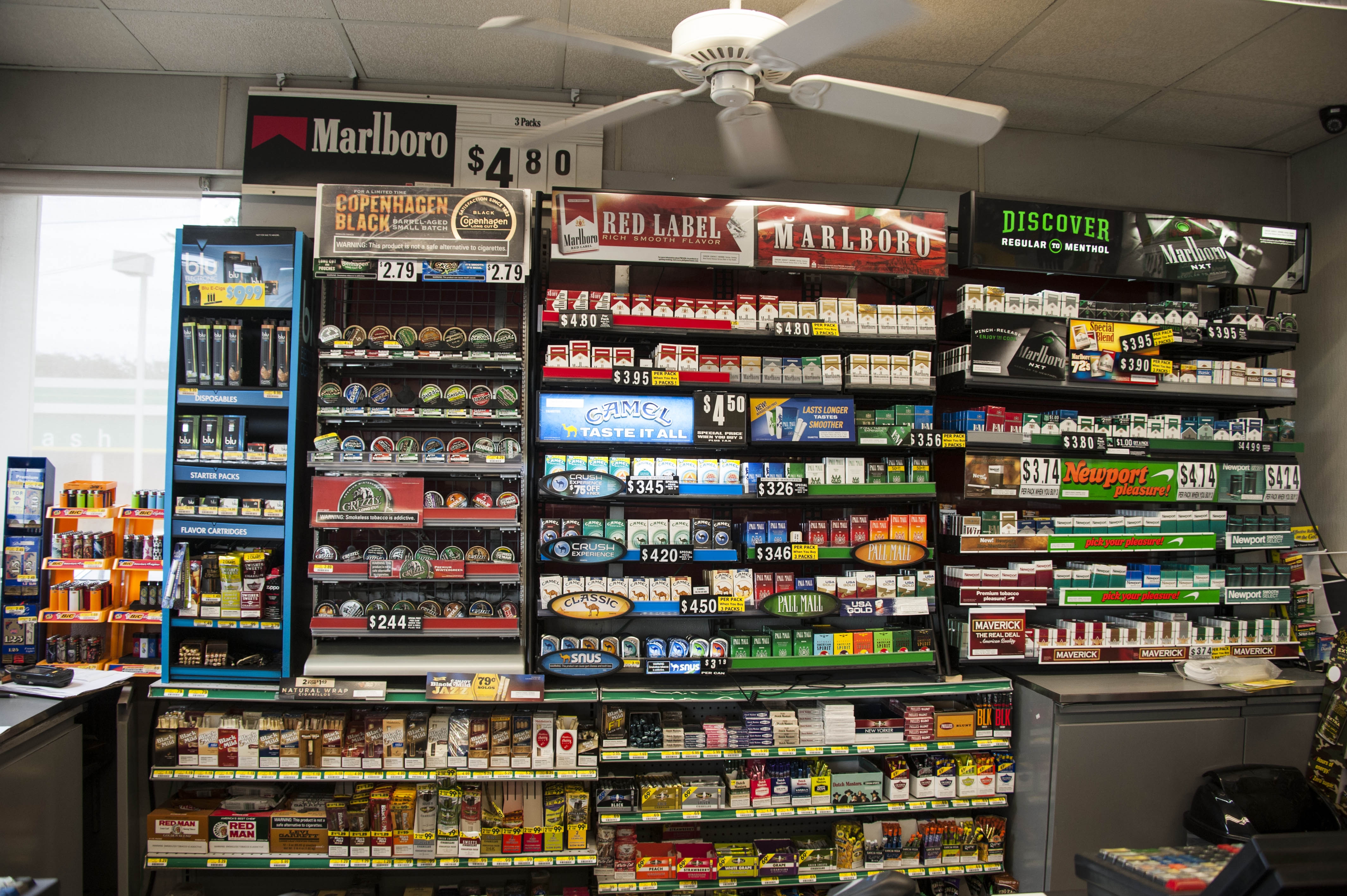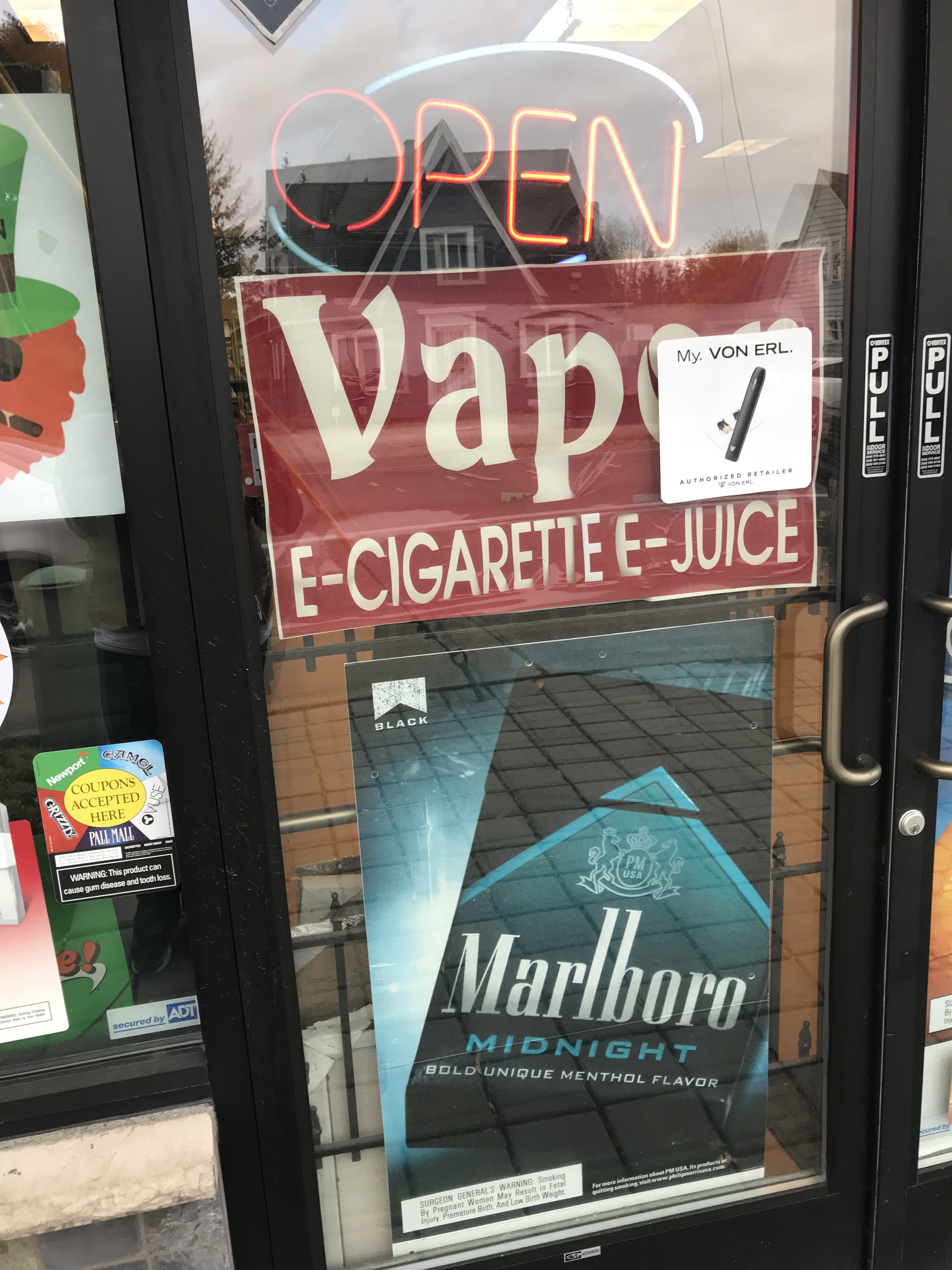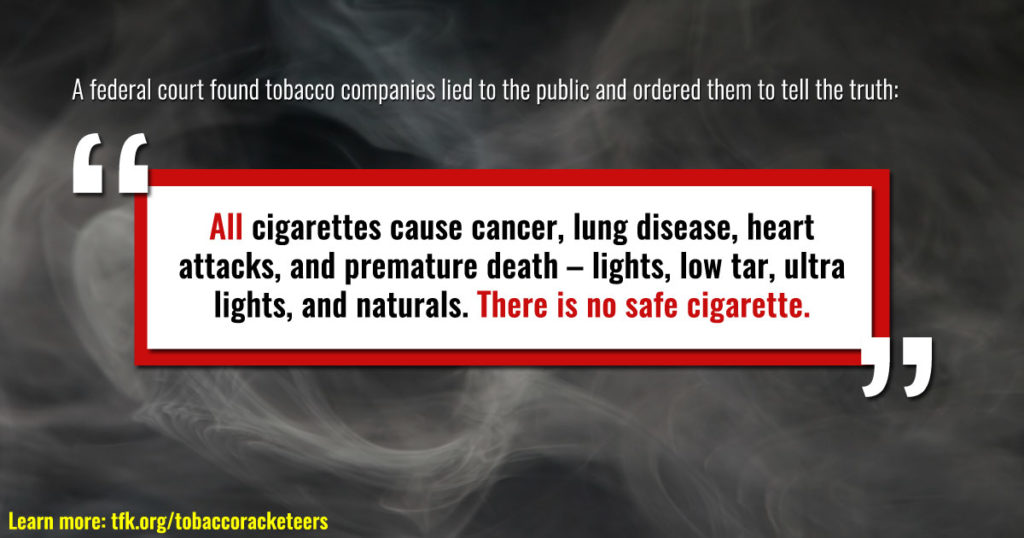Welcome to CounterTobacco.org’s “News and Research Roundup!” Each month we post a summary of the latest research, reports, and news stories on counteracting tobacco product sales and marketing at the point of sale (POS). Keeping up with what’s happening in the POS movement all across the country can help you choose policies and strategies that work best for your community. New research can help provide support for your work and evidence for the importance of the “War in the Store.” Have a story you don’t want us to miss? E-mail it to us!
New Research
Exposure to Tobacco Advertising
- How Do Tobacco Power Walls Influence Adolescents? A Study of Mediating Mechanisms, Health Psychology
-

powerwall at a convenience store Research has established that exposure to point-of-sale tobacco marketing contributes to tobacco use behaviors in adolescents, including susceptibility to future smoking. This study aimed to understand the mechanisms behind this relationship. Adolescents aged 11-17 shopped in RAND’s “StoreLab,” a life-sized replica of a convenience store. The susceptibility to future smoking of participants who shopped in a version of the store with a powerwall located behind the cashier increased by 14.3%, almost all of which was accounted for by a increase in participants’ perceived smoking norms. Participants who shopped in the store with the powerwall located behind the counter were more likely to view smoking as normative than participants who shopped in a store with the powerwall hidden. Seeing the powerwall behind the cash register made smoking seem more normative, which in turn increased the adolescents’ risk of smoking.
-
- Exposure to Point-of-Sale Marketing of Cigarettes and E-Cigarettes as Predictors of Smoking Cessation Behaviors, Nicotine & Tobacco Research
- This study assessed the interaction of exposure to marketing for both conventional cigarettes and e-cigarettes among Texas college students ages 18-29 years old who were current smokers at baseline. Exposure to e-cigarette advertising was associated with higher odds of using an e-cigarette for cigarette smoking cessation six months later. However, this was primarily among those exposed to low levels of cigarette advertising, and exposure to high levels of cigarette advertising may undermine this association. In addition, exposure to e-cigarette advertisements was not associated with successful cigarette smoking cessation six months later, and exposure to e-cigarette product displays was associated with lower odds of abstaining from cigarettes six months later, even when controlling for exposure to cigarette displays.
menthol ad
- This study assessed the interaction of exposure to marketing for both conventional cigarettes and e-cigarettes among Texas college students ages 18-29 years old who were current smokers at baseline. Exposure to e-cigarette advertising was associated with higher odds of using an e-cigarette for cigarette smoking cessation six months later. However, this was primarily among those exposed to low levels of cigarette advertising, and exposure to high levels of cigarette advertising may undermine this association. In addition, exposure to e-cigarette advertisements was not associated with successful cigarette smoking cessation six months later, and exposure to e-cigarette product displays was associated with lower odds of abstaining from cigarettes six months later, even when controlling for exposure to cigarette displays.
- Pro-tobacco advertisement exposure among African American smokers: An ecological momentary assessment study, Addictive Behaviors
- A group of 56 non-treatment seeking African American smokers in the Washington D.C. area answered questions 4 times a day on mobile devices about their recent exposure to tobacco advertisements, number of cigarettes smoked, and purchases. Overall, participants saw at least one tobacco advertisements 33% of the times they were asked. Of those advertisements, 87% were for menthol tobacco products. Participants who saw more advertisements were also more likely to report purchasing cigarettes and to purchase cigarettes on impulse. When participants reported seeing more advertisements than usual, they were also more likely to purchase cigarettes and smoke more cigarettes during that time period. This adds to the evidence that exposure to advertisements is associated with impulse purchases and smoking.
- Recall of E-cigarette Advertisements and Adolescent E-cigarette Use, Tobacco Regulatory Science
- A youth tobacco surveillance study from 2014-2015 found that students who had never used e-cigarettes but recalled seeing e-cigarettes in retail stores were three times more likely to have ever used e-cigarettes 6 months later compared to students did not recall seeing e-cigarette advertisements in stores. Odds of current cigarette use and susceptibility to future e-cigarettes use were also about twice as high in students who recalled seeing e-cigarette ads in stores. Students who saw e-cigarette ads on the internet also had higher rates of current use and susceptibility to use six months later.
- Learn more about e-cigarettes at the point of sale.
Tobacco Retailer Density and Proximity
- Neighbourhood characteristics and health outcomes: evaluating the association between socioeconomic status, tobacco store density and health outcomes in Baltimore City, Tobacco Control
- Lower income neighborhoods in the city of Baltimore, Maryland had nearly twice as many tobacco retailers per 10,000 persons (tobacco retailer density) than higher-income neighborhoods. Greater tobacco retailer density was independently associated with worse health outcomes, including lower life expectancy, age-adjusted mortality, and death from chronic lower respiratory disease. Lower income neighborhoods also had lower life expectancies and higher age-adjusted mortality rates, even when controlling for the density of alcohol and fast-food outlets, median household income, race, age, and education status. However, in models adjusting for neighborhood characteristics, spatial autocorrelation, and alcohol and fast food outlet densities, income was no longer significantly associated with health outcomes, suggesting that social context, such as the density of tobacco retailers, influences health outcomes more than income alone. The researchers suggest that policies reducing tobacco outlets in low-income neighborhoods could help address health disparities influenced by tobacco.
- Learn more about ways to reduce tobacco retailer density.
-
retailer seen on a child’s walk to school To sell or not to sell: cigarette sales in alcohol-licensed premises, Tobacco Control
- This study in Australia found that tobacco sales were not financially important for most alcohol-licensed tobacco retailers. About a third of alcohol retailers did not sell cigarettes, and 18% had stopped selling them at some point. Alcohol outlets where alcohol could be consumed on premise were more likely to report that cigarettes sales were not important to them financially. This indicates that opposition to policies prohibiting the sale of tobacco where alcohol is consumed or sold may be low.
- The influence of tobacco retailers on adolescent smoking: prevention and policy implications, International Nursing Review
- A study of factors influencing adolescent smoking outcomes in South Korea found that the presence of peers who smoke and the number of licensed tobacco retailers that students pass on their way to school both influenced students’ receptivity to tobacco marketing. In addition to gender, perceived economic status, weekly income, the presence of siblings or peers who smoke, the number of licensed tobacco retailers that students passed on the way to school also contributing to lifetime smoking.
- Learn more about ways to restrict tobacco retailers near schools.
Geographic Trends
- Rural Versus Urban Use of Traditional and Emerging Tobacco Products in the United States, 2013-2014, American Journal of Public Health
- This study analyzing data from the 2013-2014 wave of the Population Assessment of Tobacco and Health (PATH) study found that cigarette and smokeless tobacco use, as well as dual use of traditional tobacco products (defined here as cigarettes, smokeless tobacco, pipes, or cigars) was higher in rural areas than urban areas. However, use of cigarillo and hookah products, as well as dual or poly use of emerging products (defined here as e-cigarettes, cigarillos, or hookah) was higher in urban areas. There was no significant different in rates of use of e-cigarettes.
- Tobacco control in California compared with the rest of the USA: trends in adult per capita cigarette consumption, Tobacco Control
- California has been an early adopter of tobacco control policies, passing a cigarette tax increase to fund tobacco control programs in 1988, which increased protections against second-hand smoke, including smoke-free homes. The increase in cigarette prices and diffusion of smoke-free homes led to a per-capita cigarette consumption rate that was half the rate in the rest of the US. However, between 2000 and 2015, California failed to increase cigarette taxes and the decline in per capita consumption of cigarettes slowed down, stabilizing at 90% of the rate in the rest of the country.
E-Cigarettes and Vape Shops
- A new form of nicotine retailers: a systematic review of the sales and marketing practices of vape shops, Tobacco Control

Ad on a smoke shop door - This review found some differences between vape shops and other tobacco retailers. Vape shops do not receive the same types of resources from major tobacco companies, and electronic cigarettes are only beginning to be regulated. However, vape shops do use price promotions and loyalty programs. There is a greater concentration of vape shops near college and university campuses and in areas with more White residents, which is important to note for the potential to perpetuate inequities in tobacco use. Vape shop staff often have strong beliefs that their products can help people stop smoking and reduce harm, but they also sometimes provide inaccurate information and have mislabeled products. Given these differences, it is important to distinguish between vape shops that exclusively sell e-cigarettes and other tobacco retailers that sell e-cigarettes in addition to other tobacco products.
- Trajectories of E-Cigarette and Conventional Cigarette Use Among Youth, Pediatrics
- Ad watch: E-cigarette brand mocks tobacco control warning labels, Tobacco Control
- E-cigarette brand Blu’s 2017 “Something Better” print ad campaign includes prominent graphics that look like tobacco warning labels, but which contain text such as “Important: Contains flavor” or “Important: No ashtrays needed.” The actual warning label on the Blu ads (that the product is not for sale to minors and that it includes nicotine, an addictive chemical) is in very small font at the bottom left of the ads. This underscores the importance of requiring font size, layout, and formatting for warnings that will be required on ads like these as of August 2018 in accordance with the Deeming Rule.
- Medicalisation, smoking and e-cigarettes: evidence and implications, Tobacco Control
New Reports
- Menthol and flavor policies: Lessons from the field, Truth Initiative
- Broken Promises to Our Children:A State-by-State Look at the 1998 Tobacco Settlement 19 Years Later, Campaign for Tobacco Free Kids
Industry News
- Anticipating FDA’s “Reduced Nicotine Mandate,” 22nd Century Will Discontinue U.S. Sales of RED SUN Brand, Business Wire
- Figuring Out the Future of Tobacco, Convenience Store Decisions
- Altria Lays Road Map for 2018, CSP Daily News
- Appeals Court Hears Challenge to Retail Tobacco Enforcement, NACS Online
- Local Lawmaking Remains Battleground for Retailers, CSP Magazine
- Vuse falls further behind Juul on e-cig sales, Winston-Salem Journal
POS Policy in the Media
- Cities across Minnesota begin to tackle tobacco regulations, Star Tribune
- Philip Morris hides data in plain sight on dangers of new heat-not-burn product, Associated Press
- Some Cigars Pack Bigger Nicotine Punch Than Cigarettes, U.S. News
- Time to put an end to Big Tobacco’s lies, Orange County Register
- Parents, Local Lawmakers Argue for Tighter Regulations for Hookah Bars on Long Island, CBSNew York

Federal News
- Will the FDA’s New Tobacco Strategy Be a Game Changer?, JAMA Medical News & Perspectives
- Quitting smoking is hard. FDA wants new nicotine-replacement therapies to help, Washington Post
- U.S. Tobacco Companies Will Run Anti-Smoking Ads Everywhere – Except Social Media, Vogue
- Study calculates contribution of risk factors to cancer in the United States, EurekAlert!
Licensing
- PENNINGTON: Electronic cigarette vendors must now be licensed, com
- MONTGOMERY: Ordinance proposed to license stores that sell tobacco, e-cigarettes, com
- Independence city council votes to cut back on stores that sell tobacco, KSHB
Menthol and other flavored tobacco products
- Tobacco and e-cig companies appealing to teens’ sweet tooth, Sun Prairie Star
- Tired of Waiting for the Feds, Local Groups Target Menthol Cigarettes, Fair Warning
- Louis Park, Minn. Bans Sale of Flavored Tobacco Products, HalfWheel
- Robbinsdale City Council Votes to Restrict Sale of Flavored Tobacco, WCCO
E-cigarettes
- Some E-Cigarette Flavors May Be More Harmful Than Others, The Atlantic
- Schumer Urges FDA to Regulate E-Cigarettes Immediately, USA Herald
- Some Older Smokers Turn to Vaping. That May Not Be a Bad Idea, New York Times
Tobacco 21
- Plymouth joins other cities, bumps up minimum tobacco-buying age to 21, Star Tribune
- Elk Grove Village limits tobacco sales to 21 and over, Daily Herald
- Renewed Effort to Push “Tobacco to 21” Bills Through Congress, Lexology
- Dublin council bans tobacco sales to people under 21, The Columbus Dispatch
- Topeka City Council raises age for buying cigarettes and other tobacco products, KSNT
- Long Beach raises smoking age to 21, LI Herald
Find more stories in last month’s News and Research Roundup.
Know of a story that we missed? Email us, and we’ll be sure to include it in next month’s roundup!


